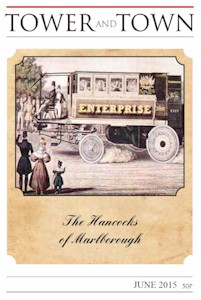

Tower and Town, June 2015 (view the full edition) (view the full edition)Walter Hancock: The Steam Carriage BrotherWalter was the fifth of the brothers. The first four (and sister Elizabeth) were apprenticed to their father as cabinet makers, but Walter was apprenticed to a jeweler/clock maker in London. However, he did not follow that trade and in 1820 he joined brothers Thomas and John who were using 'India rubber' to make waterproof clothing (two layers of cotton sandwiching a rubber layer) and exploring other uses. To speed production the company needed a small, lightweight steam engine. Walter built one, his 'pistonless engine' not using cylinders with moving pistons but two bags ('lungs') of rubberised cloth which alternately filled and emptied of steam driving a crankshaft to and fro. This was so powerful for its size and weight that his mind turned to using it to drive a carriage. After he had methodically developed a compact boiler which would both raise steam at a sufficient rate and be safe from boiler explosions he built his first three wheeled experimental vehicle. With the concept proven he built the 'Infant,' a 10 passenger coach (like stage coaches, all Hancock's vehicles had names) which in 1831 started to run for hire between Stratford East and Finsbury Square in London. He was then approached by the recently formed London and Brighton Steam Carriage Company for whom he built the 'Era,' but as they proved unable to raise the finance he kept it.
In 1836 he built for his own use the 'Automaton' with seating for 22 and a more powerful engine which in 1839 went from London to Cambridge in 4.5 hours including a stop for lunch. In the meantime he had built a modest runabout called the 'Phaeton', also for his own use. Sadly though, his lack of business acumen caught up with him. In 1842 he ran out of money, gave up the factory and filed for bankruptcy. But this does not detract from his genius in solving the boiler problems, the wheel problems (he invented the strong wooden 'artillery' wheel later used on early motor cars), and running the first steam vehicles to carry fare paying passengers on common roads. He built 11 in all, and had the horse flesh lobby not succeeded in placing so many obstacles in the way of these vehicles, which ruined their commercial success, they would have filled the gap in local transport. Running at 15 or 20 miles an hour they would have improved urban transport and prevented the building of so many uneconomic rural railway branch lines. Alexander Kirk Wilson |